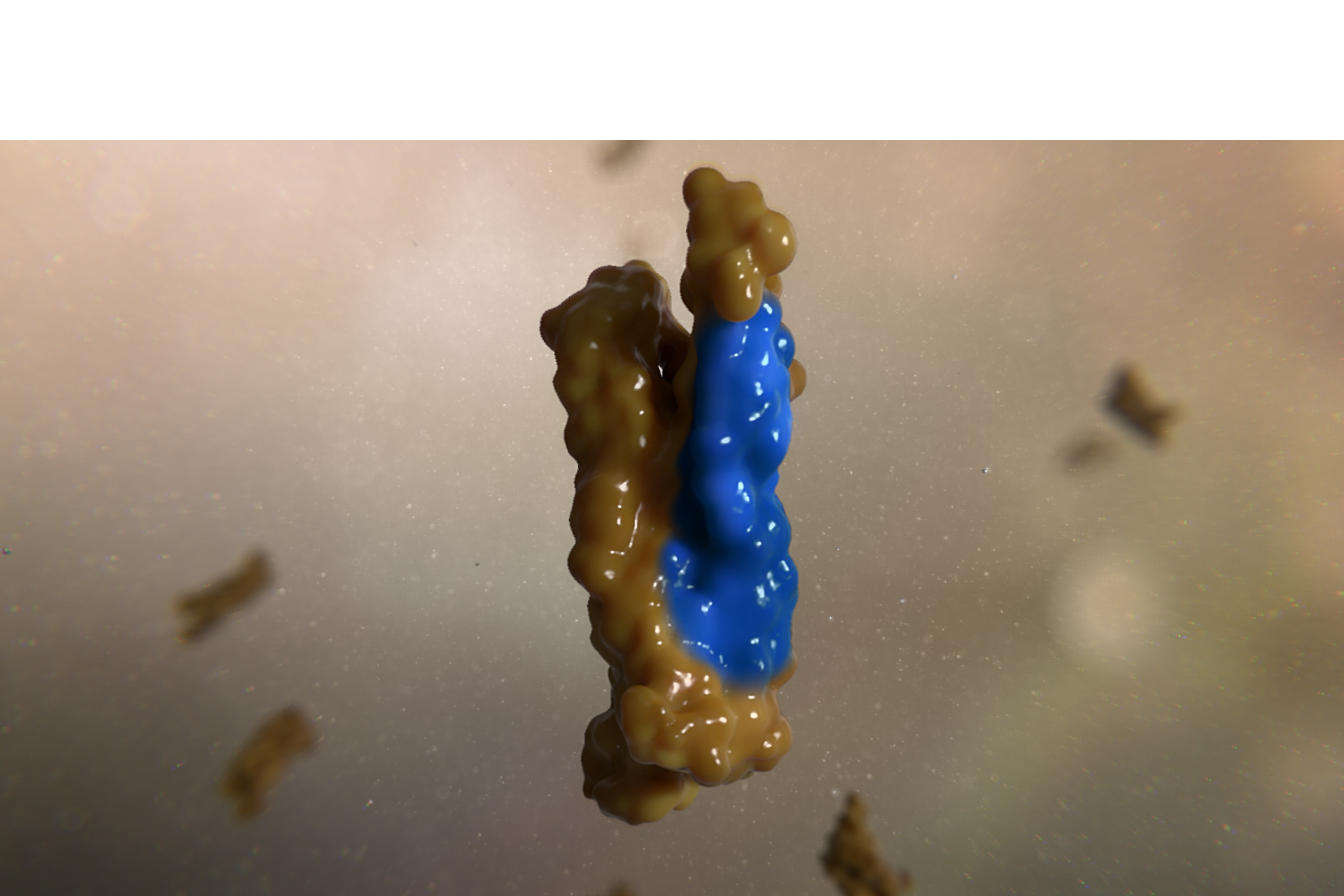
Cell Penetrating Alphabodies
Capitalizing on the vast universe of intracellular targets to generate multiple transformative cancer treatments
Cell Penetrating Alphabodies (CPABs) represent a major breakthrough in drug development given their unique ability to enter human cells and selectively modulate intracellular protein interactions, both in the cytosol and the nucleus.
DISCLAIMER: The Cell Penetrating Alphabodies portrayed in this video are still in development. These experimental drugs have not been tested in clinical trials and are not yet available to patients.
Complix’s proprietary Cell Penetrating Alphabody (CPAB) technology allows it to access a broad range of intracellular disease related targets that are considered “intractable” by currently available drug formats, such as antibodies and small molecules.
For example, Complix has demonstrated that CPABs can modulate the activity of transcription factors, a prominent class of intracellular proteins that play a key role in regulating important biological pathways.
Conventional drug formats can only access approximately 20% of all known disease targets. Complix believes that its ability to access the intracellular space and bind novel targets with high affinity and specificity will allow for the development of effective new therapies in oncology and other important disease areas with high medical need.
Significant benefits
CPABs have been designed to overcome the limitations of conventional antibodies and small molecules through combining the specific potency of biologics with the cell penetrating capacity and stability of small molecules. CPABs may offer significant benefits over current therapeutics, including:
High target specificity
Unlike small molecules, CPABs are proteins and therefore interact with their targets via large surface areas (akin to antibodies). This allows CPABs to bind to target structures with a potency and specificity not achievable with small molecules, thereby opening up targets hitherto undruggable with more conventional approaches.
Efficient cell penetration
CPABs have the unique ability to penetrate the cell, due to their helical structure and the presence of specific sequence motifs that facilitate transmembrane passage. This allows CPABs to access the intracellular space and gain access to a vast diversity of new oncogenic targets.
High probability of success
Due to their rigid and well-defined structure CPABs are conformationally constrained. Hence Complix scientists can use computer modeling to predict how they will bind to their target. This means they can create high-affinity CPABs with great precision and high probability of success using rational in silico design. Such an approach is not possible with current biologics such as antibodies.
Rapid and reliable pipeline expansion capabilities
Complix can rapidly and reliably generate high-affinity/high-specificity CPABs in less than 12 months.
Low immunogenicity
CPABs have been purposely designed to be of low immunogenic potential. This low immunogenic potential has been confirmed in preclinical studies.
Great stability in the body
The CPAB half-life is extended through the incorporation of an albumin binding domain, an established method in the clinic, leading to extended presence in the circulation. Moreover, the packed helical structure ensures that the CPAB remains stable even in the denaturing conditions of the intracellular space, and hence retains its ability to interact with its target.
These unique features enable CPABs to address a wide range of intracellular targets that are considered “undruggable” by conventional therapeutics.
Complix has established a strong intellectual property position protecting the CPAB platform and its emerging product portfolio.


